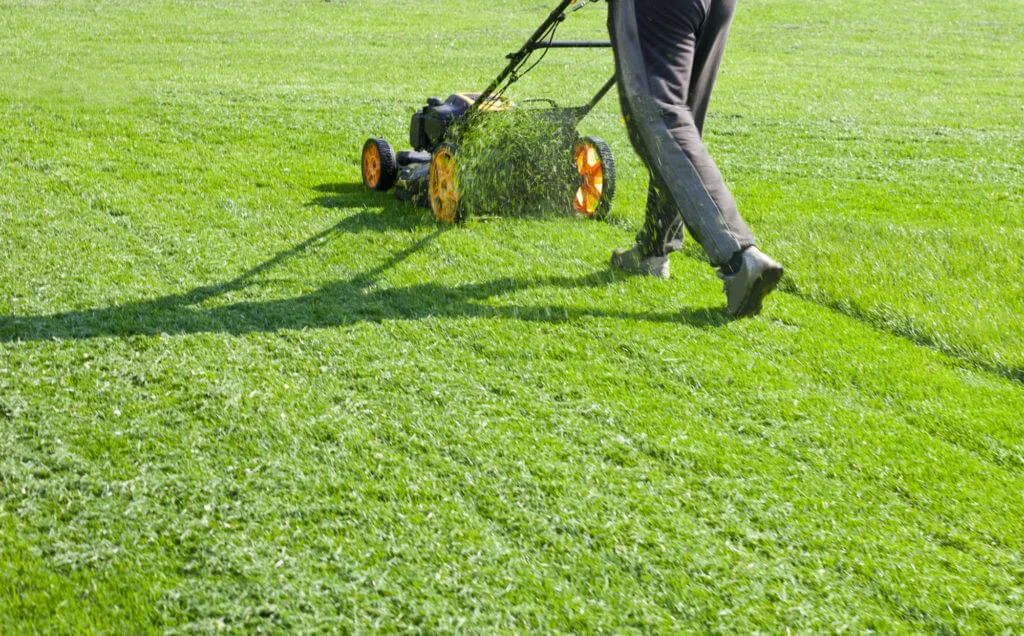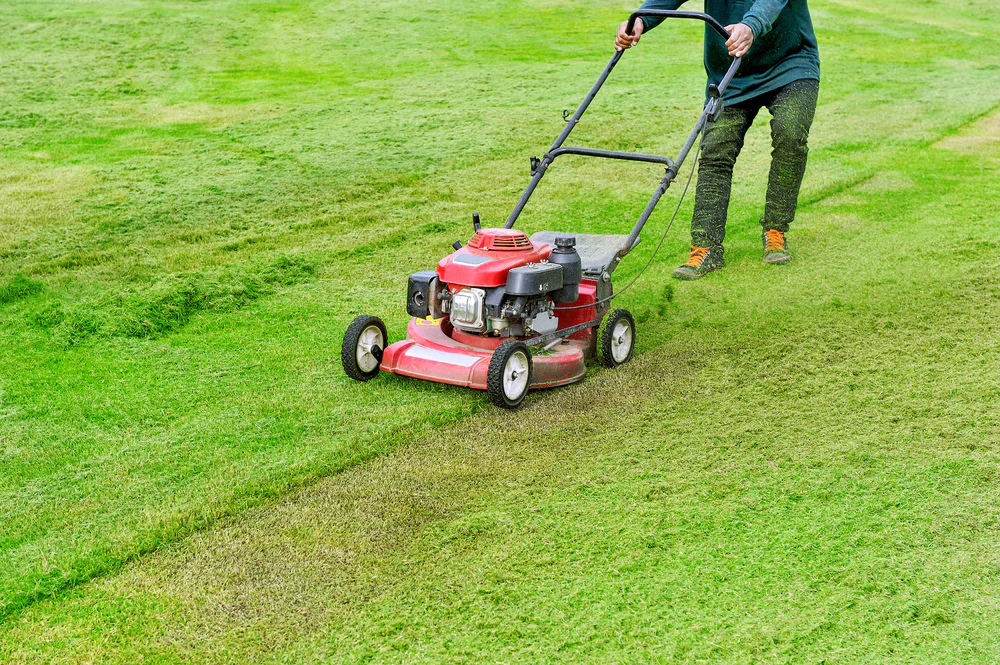What Is the Best Feed for Lawn in Summer?
Last Updated on June 17, 2025 by Duncan
If your lawn begins to look pale and patchy in the summer, you can apply feed to it, which will provide an extra burst of nutrients to help restore lawn damage. So, if you have been wondering whether you can feed your lawn in summer, yes, you can do it.
What is the best feed for the lawn in summer? Well, any feed is better than none, but for the best outcome, go with granular or liquid fertilizer. Granular fertilizer gives you better control and tends to last for a long time. Liquid fertilizer, on the other hand, is easy to apply and absorbs quickly into the soil.
While this is the case, always check the product box for instructions on how often to feed your grass and avoid overfeeding.
Applying fertilizer more regularly than the manufacturer’s recommendations might result in a burst of leaf growth at the price of appropriate root development and, over time, may weaken the grass, allowing weeds and moss to grow in. You also risk having a fertilizer burn on your lawn, and you don’t want it, do you?
How to feed your lawn in summer
Fertilizing your lawn throughout the summer can improve its health significantly, but you must do it correctly. Here’s a detailed, step-by-step instruction that will help you obtain the best outcomes from a DIY approach.
Check the forecast.
Before you begin, look at the weather forecast. It is better to avoid fertilizing if rain is forecast shortly. Heavy rains might wash the fertilizer away, wasting your efforts and perhaps injuring your lawn.
Mow first.
Mowing before fertilizing is essential. Cutting your grass makes it easier for fertilizer to reach the soil, allowing nutrients to be absorbed more effectively. Avoid cutting your grass too short, as this can cause stress on the lawn.
Use the Right Spreader.
Selecting the appropriate spreader can make all the difference. A broadcast spreader can cover huge yards quickly and evenly. A drop spreader provides more control and precision in smaller or more intricate areas, preventing uneven coverage.
Fertilize in the morning or late evening.
Timing is everything. Apply fertilizer in the morning, preferably while the grass is dry, but the weather is still chilly. This keeps the fertilizer from burning your grass and gives it time to sink into the soil before the midday sun warms up.
Water deeply
After you’ve spread the fertilizer, thoroughly water your lawn. This helps to move nutrients down to the roots, where they can be absorbed. Deep watering is essential to avoid scorching your grass and to guarantee that fertilizer permeates the soil properly.
Stay off the grass.
After fertilizing, don’t walk on your lawn for a day or two. This helps to disperse the fertilizer uniformly and prevents the soil from becoming compacted. Allow your lawn to absorb nutrients without interruption.
Mistakes to avoid when feeding your lawn in summer
Summer fertilizing is essential for a lush, green lawn, but it’s crucial to avoid common blunders that might do more harm than good. Here are some significant hazards to watch out for:
Using too much nitrogen: Applying too much nitrogen might cause your grass to burn and become stressed. Always read the label and apply sparingly to avoid injury.
Fertilizing in high heat: Fertilizing during the hottest part of the day might cause nutrient evaporation and lawn burn. Instead of doing this, apply the fertilizer in the early morning or late evening.
Skipping post-fertilizer watering: Watering after fertilization allows nutrients to reach the roots. Without water, the grass can be burned rather than nourished.
Should you use organic or inorganic fertilizer to feed your lawn?
The debate about using organic vs. chemical fertilizers is never-ending, but should there be one in the first place? They are two sides of the same coin, with each fertilizer having its niche. The key here is to use the correct type of fertilizer at the right time.
Plants cannot distinguish between inorganic and organic fertilizers since their primary interest is nutrient absorption. So, if you use a fast-release nitrogen fertilizer, plants that already have an adequate supply of this nutrient will still take it. If this occurs, it may be damaging to the plants.
You should note that overusing inorganic fertilizers has a higher risk of injury than using organic ones. Continuous chemical use might lead to over fertilization and soil degradation. In addition to this, it can exacerbate the already harmful greenhouse effect in the environment.
To be responsible while fertilizing your lawn, choose the right type of fertilizer for your plant and apply it at the right time using the right devices. Also, apply both types in moderation to get the quick, targeted benefits of inorganic fertilizers and the long-term, consistent, and holistic effects of organic fertilizers.
Summer best practices
Aside from fertilizing, it is equally crucial to follow other lawn care procedures to ensure your turf can last the winter and get a jump start for the following spring. Here are some of the best lawn care practices to conduct in late summer:
Use the proper mowing procedures. Anyone can operate a lawn mower, but maintaining a beautiful lawn might be difficult if you don’t know how to use it correctly. So take time to learn how to do it properly or hire a professional to help you out.
Aerate areas with high foot traffic. Remember to aerate your lawn’s compacted soil sections between late August and early September. To break up soil cores, use devices with hollow metal tubes or tines, followed by raking.
Dethatch early to allow grasses to recover. Dethatching in late July is especially beneficial for cold-season grasses. The timing permits your grass to reestablish its roots before going dormant in the winter.
Seeding can help revitalize specific areas of the lawn. Identify badly damaged or sparse parts of your lawn and begin seeding in late summer. This is a good time to plant new grass and prepare the roots for active growth in the spring.
Pro tip: If you have pets, use pet-friendly lawn fertilizer. Also, wait at least 24 hours for the fertilizer to be absorbed before letting your pets play on the lawn.
FAQs
How late into the summer can I fertilize my lawn?
The best time for late summer fertilization is from August to September, but this will still rely on a variety of factors unique to your area. The aim is to fertilize your lawn prior to the first fall frost date.
What if I fertilize too late?
Unless you’re winterizing cool-season grass, fertilizing your lawn after the late summer to early fall window is like keeping your turf awake past its bedtime.
Winter is a period of dormancy when they slumber. However, if you apply fertilizer too late in the fall, your grass will be weakened and will not perform as well when spring arrives.
What is the best fertilizer to use in late summer?
The fertilizer you use for your lawn in late summer to early fall will be determined by your local ordinances and the results of your soil test.
If you live in a community that prohibits the use of phosphorus in lawn fertilizers, you must purchase an appropriate bag with a zero phosphorus value in the N-P-K ratio, such as 21-0-21 or 24-0-12.
Apply the appropriate fertilizer in late summer.
Late-summer lawn fertilizers might help prepare your turfgrass for the colder months. This second fertilizer application can further improve the nutrients needed for spring recovery.
While this is the case, with so many different fertilizers and application methods to select from, it might be intimidating to complete the task yourself.
The best way to go about it is to consult a professional who will guide you through the process.


